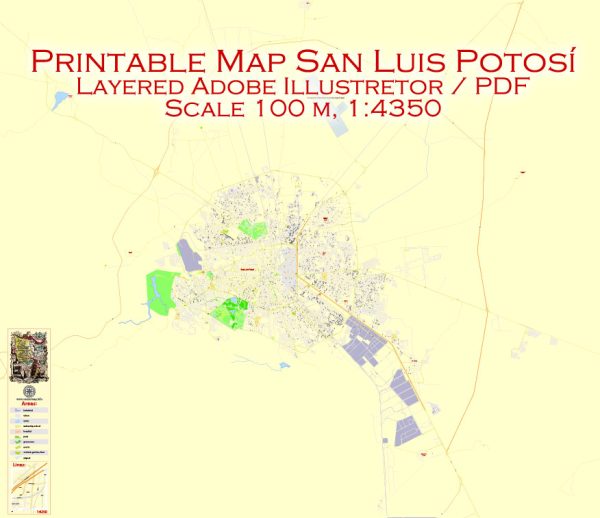San Luis Potosí, a city located in central Mexico, has a rich history of urban development that dates back to the colonial period. Here is a brief overview of the history of urban development in San Luis Potosí:
- Colonial Period (16th to 18th centuries):
- San Luis Potosí was founded in 1592 by Spanish explorer Don Luis de Leon, who named it after Saint Louis and the rich mines (Potosí) of Bolivia.
- The city quickly became a major center for silver mining, and its wealth attracted settlers and investors.
- The colonial architecture of San Luis Potosí reflects the influence of Spanish design, with churches, mansions, and public buildings constructed in the Baroque and Churrigueresque styles.
- Independence and 19th Century:
- San Luis Potosí played a significant role in the Mexican War of Independence (1810-1821) against Spanish rule.
- The city’s strategic location made it a key center for political and military activities during this period.
- After gaining independence, San Luis Potosí experienced economic growth and continued to be an important hub for mining and trade.
- Late 19th to Early 20th Century:
- The city underwent modernization efforts during the late 19th century, with the construction of railroads and the introduction of new technologies.
- Urban planning initiatives started to shape the layout of the city, and public spaces were developed.
- San Luis Potosí became an important cultural and educational center during this time, with the establishment of institutions such as the Autonomous University of San Luis Potosí.
- 20th Century Industrialization:
- The mid-20th century saw industrialization and economic diversification in San Luis Potosí.
- The growth of manufacturing industries contributed to urban expansion and increased population density.
- Infrastructure development, including roads and utilities, kept pace with the city’s expansion.
- Contemporary Period:
- In recent decades, San Luis Potosí has continued to experience urban growth and development.
- The city has attracted foreign investment, particularly in the automotive industry, leading to the establishment of industrial parks and the growth of the manufacturing sector.
- Urban planning efforts focus on addressing the challenges of rapid urbanization, such as transportation and housing.
Throughout its history, San Luis Potosí has evolved from a colonial mining town to a dynamic urban center with a mix of historical architecture and modern infrastructure. The city’s development reflects its economic, cultural, and political significance in the region and the broader history of Mexico.


 Author: Kirill Shrayber, Ph.D.
Author: Kirill Shrayber, Ph.D.